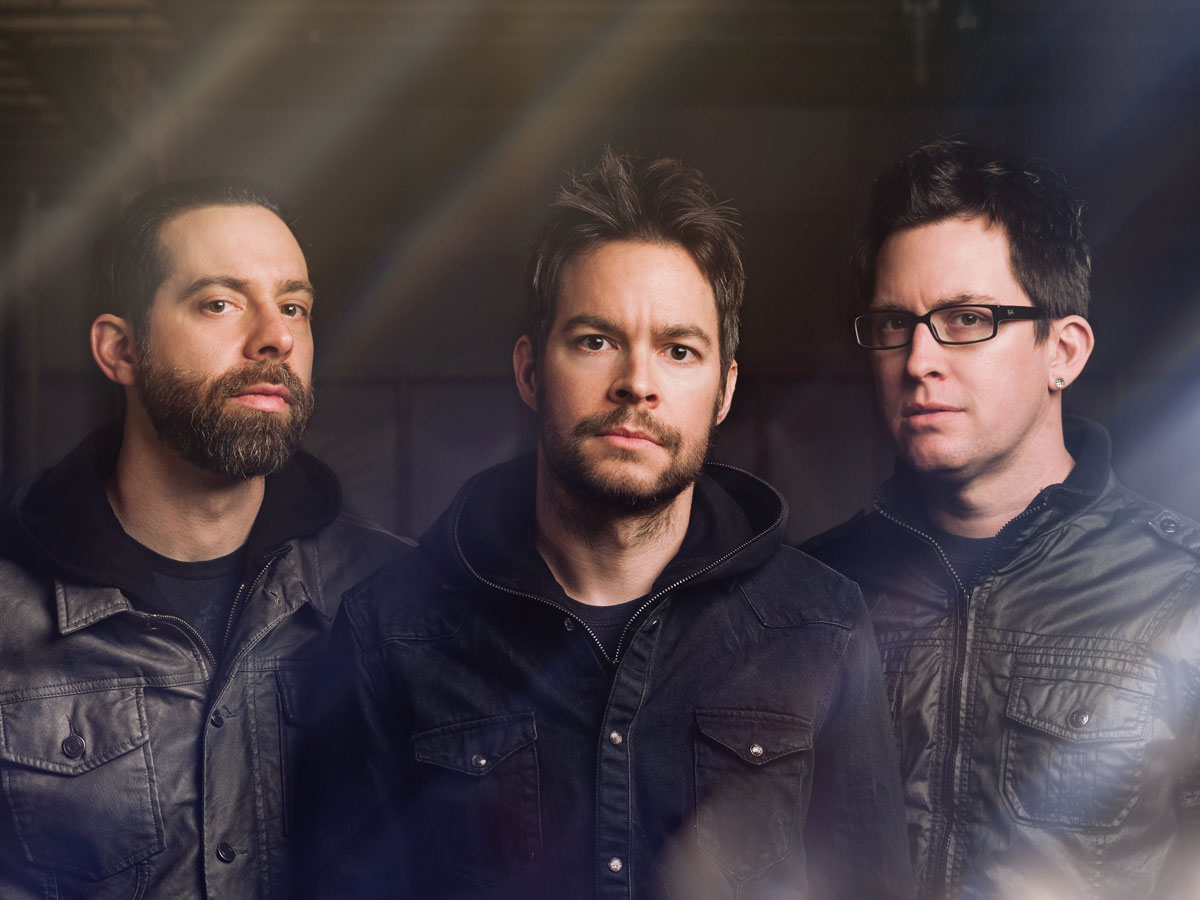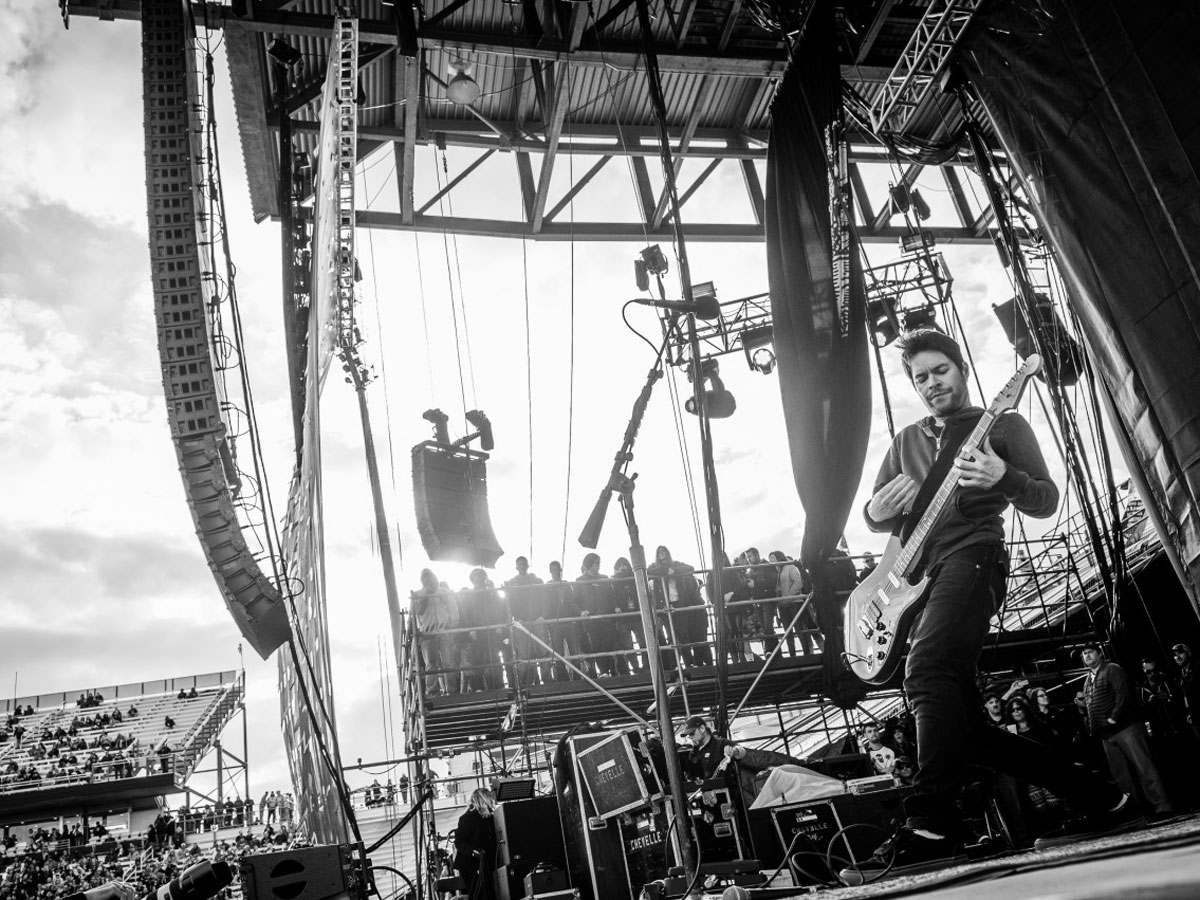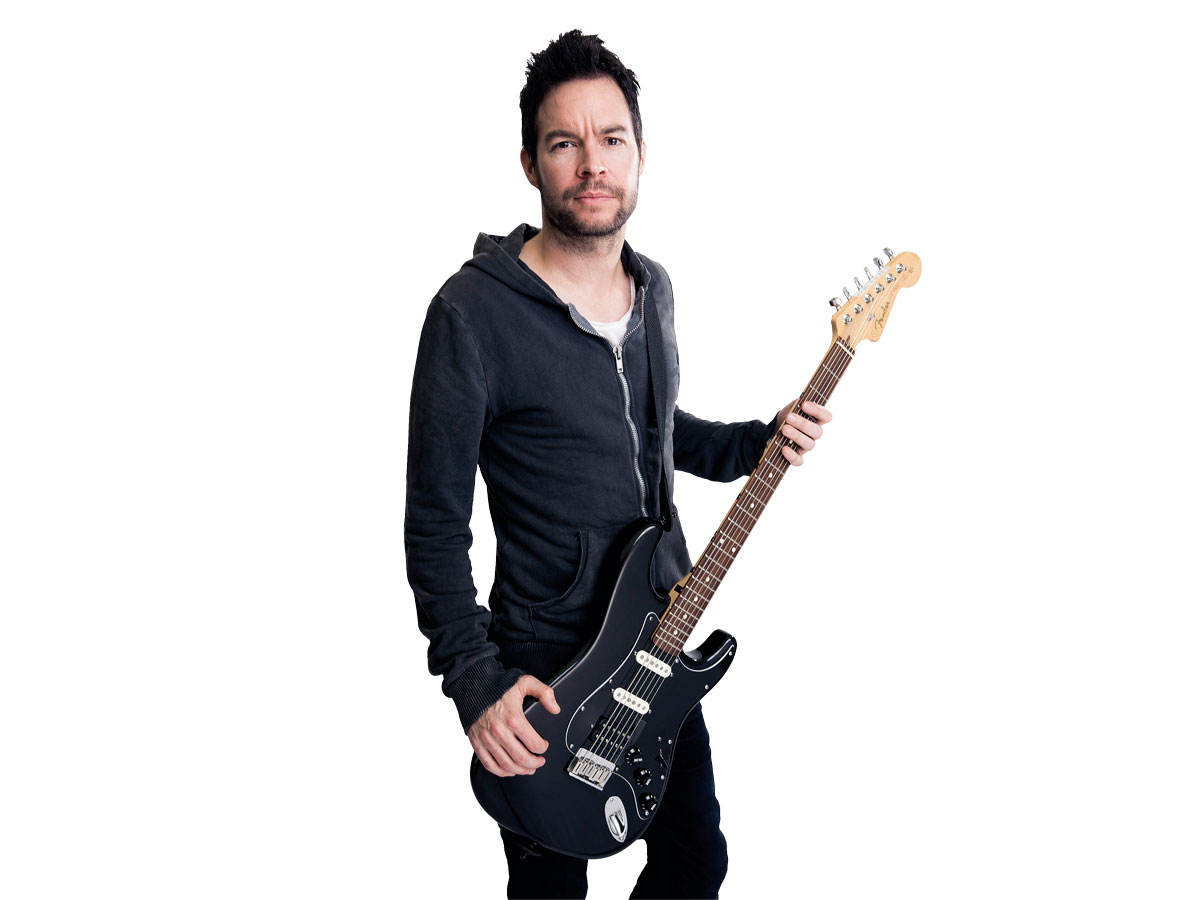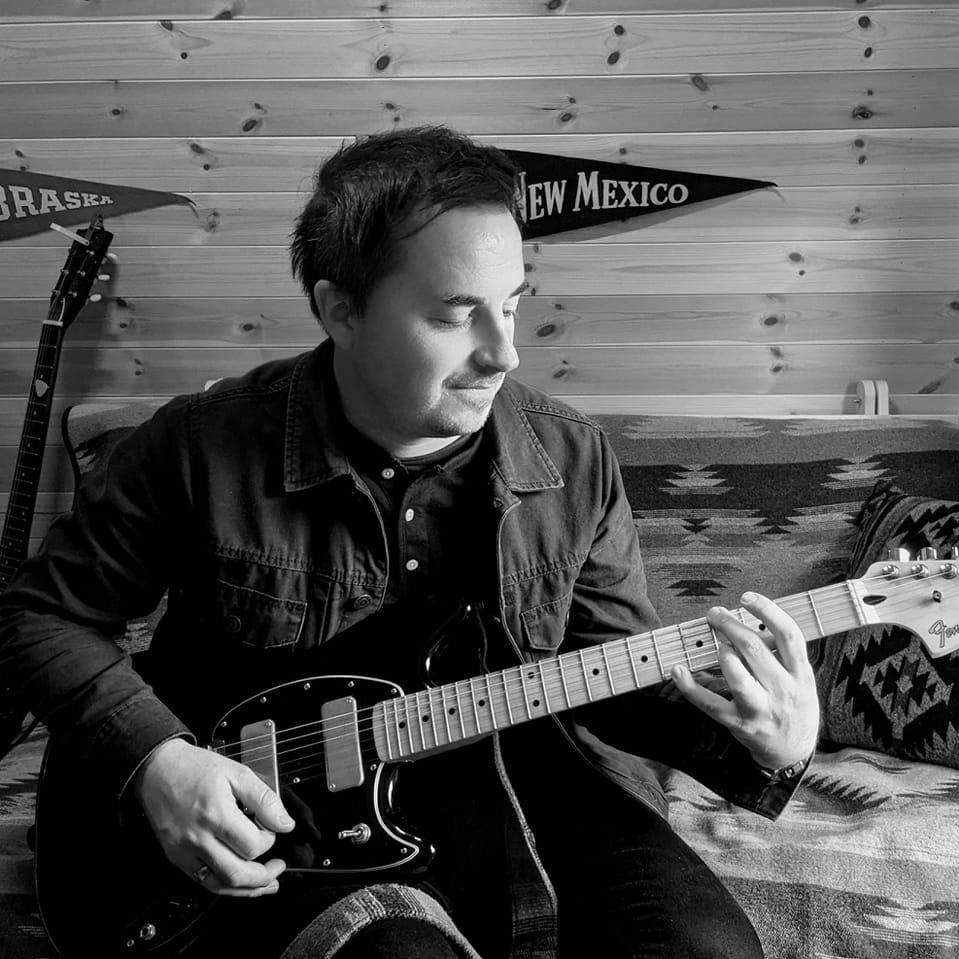Chevelle talk baritones, Barresi and breaking Europe
Heavy rockers on new album La Gárgola

Introduction
Chevelle might be the biggest heavy band that most Europeans haven’t heard; 10 years in and going strong in the US charts while others flounder. We meet main man Pete Loeffler to talk baritone love, fuzz logic and how he’s getting darker by lightening up...
“We have made it our mission to come to Europe three times this year"
Despite racking up four million album sales and hitting the top three in the US with their latest, Chevelle still seem relatively unknown on European shores. That’s something Pete Loeffler wants to put right when we meet the singer/ guitarist backstage at Download Festival.
“We have made it our mission to come to Europe three times this year,” he declares stoically. “We came to London a couple of months ago, played an 800-seater. It went well, so we decided to kick it up. Now we’re coming back in October/November. We’re doing four shows in England. We’re going to play Germany, Paris... it’s been too long.”
It’s a wise decision, because fans and newcomers should wonder why it took them so long. Partial to Muse, Deftones or Tool? There are dark, muscular riffs, hooks and grooves galore for you here with a massive tone that belies three-piece limitations.
Seventh album La Gárgola is also Chevelle’s strongest statement yet in a consistently strong discography, welded under the experienced eye of producer Joe Barresi (Tool, Queens Of The Stone Age, Slipknot). Now is the perfect time to get acquainted and up to speed with the tones of Chevelle.

Raiders of the pop charts
These seem like challenging times for heavy bands to sell records, but you went into the charts at number three with La Gárgola...
“We were shocked. I think we’ve got some loyal fans. We never expected to be up in the top 10 and, lo and behold, number three. That damn Frozen soundtrack kicked us out of number one!
"Songs like Hunter Eats Hunter, and LaGárgola is the gargoyle [in Spanish]. So it’s just poking fun, almost at myself, with rock music"
"I’m kidding, but actually it was 120,000 that week and we were like 44,000 or whatever it was. It’s weird because everybody still looks at [the chart], but it’s certainly not a great gauge for success.”
This album feels darker than the previous two in terms of atmosphere; what was influencing that in the writing stage?
“I was watching a lot of horror films. It’s kind of funny, horror films are like jumping off a bridge with a bungee chord; it’s scary and then it ends and you’re happy. It’s a rush, that’s the way I look at it. It’s not like I’m into death or dismemberment, but I was looking for a rise out of sitting in front of the television.
"So it’s songs like Hunter Eats Hunter, and LaGárgola is the gargoyle [in Spanish]. So it’s just poking fun, almost at myself, with rock music. I love it, but it’s okay to write about silly situations and not be too serious all the time. I’ve learned as I grow up things should be playful sometimes.”

Sonic surveys
Sonically, One Ocean feels like a light in a darker-sounding record; it’s cleaner and soaked in reverb. Is that an area you’re enjoying exploring?
“Yes, I’m loving reverb. I use the [EHX] Holy Grail a lot. I used a couple of pedals, really old-school stuff that Barresi, our producer, had. Reverb is something I never used in the early days, there’s another song called Twinge that I used a lot of reverb on. It just takes you to a new place with the guitar.”
There are some really thick fuzz tones that have become a major part of your sound elsewhere on this album; what units did you gravitate to?
“I used some of Joe’s, and there’s a pedal called a UFO which is spectacular. Then there were also Z.Vex pedals - a Fuzz Factory.”
"Joe Baressi’s a guitarist, as well as an engineer and producer. His guitar tones are stellar"
What influenced the move to more fuzz?
“Probably my love for Queens Of The Stone Age. I love their tones. Also, Ministry. I’ve listened to a lot of Ministry in the past and I wanted to incorporate some of that fuzzy... it’s not exactly like low-end fuzz, they let the bass bring up the low end and then it’s high-end fuzzy guitars. I tried to pull off of that.”
Did fuzz influence the switch to drop C tuning on this album?
“Yes, it’s easier to control. I’ve been all the way down to drop A# and drop B, I decided to come back up instead of going further. The tuning issues can be a nightmare, and I feel like my voice has grown. In the beginning, I had a hard job sustaining that and so I would go to drop tunings, but I feel I can handle coming up with the tunings and I love it. I’ll probably write the next one in C as well.”
This album is the second time you’ve worked with Joe Barresi; what impact does he have on the guitar side of things?
“He’s a guitarist, as well as an engineer and producer. His guitar tones are stellar. Saying that, though, I think we teach each other things, especially on this album. I brought him a few pedals that I wanted to use and we had to talk about it. We had to get to a good place. It was a good thing for us both.”

Riffing and writing
Do you demo the songs in a home studio before you go in to record?
“Oh yeah. Although Barresi has great ideas and we’ll cut parts in half if they seem too long. Or he’ll say, ‘I don’t believe this chorus is strong enough, can you work on something?’ Things like that. He tries to do it in a nice way. So we do trust him a lot and it’s worked out.”
"I tour with Mesa MkIVs. I know them, and I can play a festival and have never seen the amp I’m using before in my life until I walked onstage"
What do you use during the writing and demo process?
“What I use a lot is an electric guitar with a cigarette [box] amp because it’s so easy and it sounds like crap but it works for me because it’s fuzzy all the time. I’ll write riffs on that and take my iPhone out, do a voice memo and take down a riff. So when I go to write a record I go to it, pick through them and bring them to the guys. Go from there.”
Some of your riffs are challenging to play and sing, how did you go about building that skill?
“I would hole up in my basement bedroom and just practise - I was terrible at first. I couldn’t sing and play. It took practice. Also, when I started playing, it was Van Halen and stuff; a lot of shredding. It gave me a good platform of stability, so when I did start singing it came a little bit easier.”
You’ve been playing Mesa/Boogie since you were 15 - why have you stuck with them?
“I have a MkV, but I tour with MkIVs. I know them, and I can play a festival and have never seen the amp I’m using before in my life until I walked onstage, but I can tweak it in five minutes and then play on it. It’s hard to leave that behind.”
What’s important about the tone itself?
“There’s a balancing act with the low end. There’s an EQ on it and if you go a little too far it gets woofy. But it’s that low end that I really need in a three-piece.”

Banking the baritones
You played PRS for years, but you’re now playing Fender baritones. How’s that switch working out?
"I just collect every baritone I can find. I’ve got Danelectro, Gibson, Fender, PRS..."
“I owned five Subsonic Baritones that I loved, they sounded great. So it was a good time to move. I actually bought them six years ago, watching Craigslist... I just collect every baritone I can find. I’ve got Danelectro, Gibson, Fender, PRS...
"I’ve got some weird ones, too, that don’t sound great, but when I was starting out with baritones 15 years ago, there was like one baritone in the Paul Reed Smith collection and they would share it between heavy down-tuned bands.
"Everyone was trying to get it, everyone who borrowed it asked to buy it; ‘No, no, no, it’s too expensive.’ And I can’t understand why nobody jumps on board. Baritones are solid guitars in any tuning.”
It’s not talked about a lot, but many heavy bands will use baritones for tracking in the studio - to someone who is new to baritones, what do they offer?
“It is possible if you put fat strings on a standard Strat, 25.5-inch scale, it’s not bad. But with a baritone the intonation is just more precise and I can dig in; play aggressively, and that’s what I need. I like that the Subsonic is a 27-inch scale, not 28-inch. That’s perfect for me. It’s a light guitar and it’s balanced well. If you get a rosewood neck and you throw the right pickup in - like a Seymour Duncan Jeff Beck-it’s a good combination for heavy rock."
You’ve got a Strat as well we see...
“I called up my friend in Slipknot, Jim Root. I’ve got two of those I’m using on tour as well. He’s got a mahogany hardtail Strat and that thing is killer. It’s so good I went out and bought two. I’m hoping in the future Fender might do something [for me] along those lines.”

Rob is the Reviews Editor for GuitarWorld.com and MusicRadar guitars, so spends most of his waking hours (and beyond) thinking about and trying the latest gear while making sure our reviews team is giving you thorough and honest tests of it. He's worked for guitar mags and sites as a writer and editor for nearly 20 years but still winces at the thought of restringing anything with a Floyd Rose.

